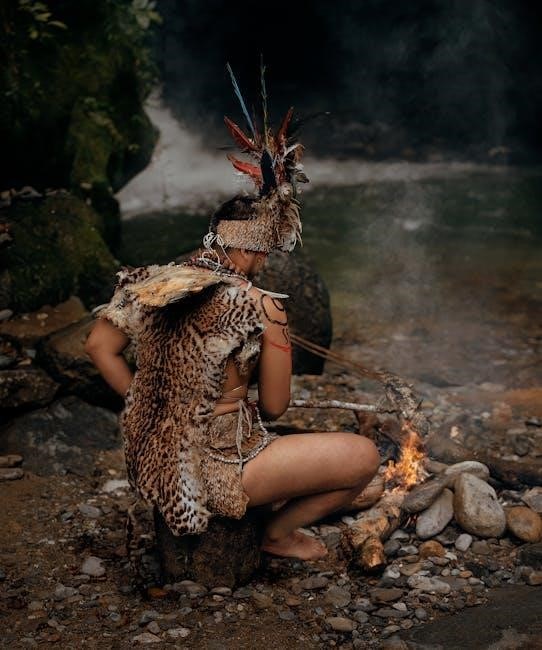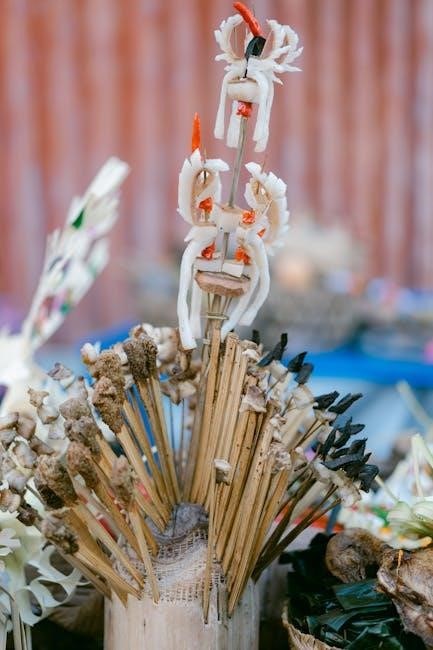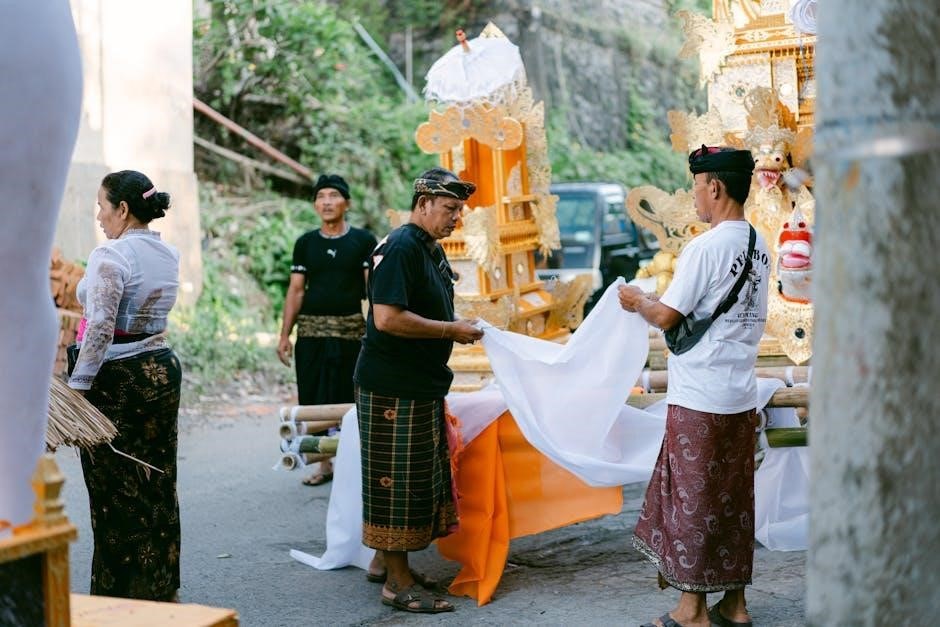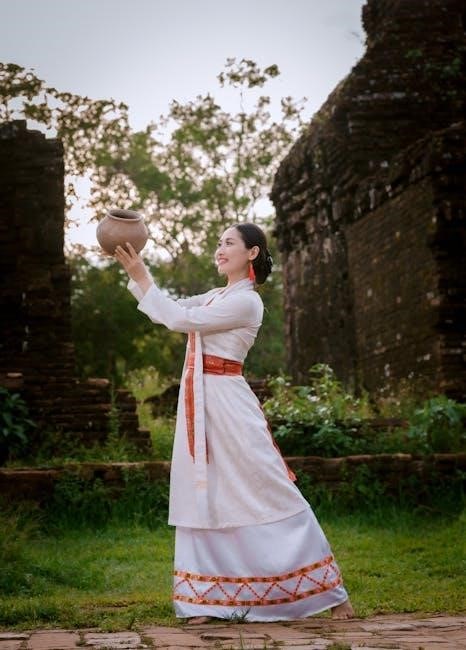The Second Degree Masonic Ritual, or Fellow Craft Degree, signifies intellectual growth and moral development, using symbolic rituals to convey profound truths and ethical lessons.
It builds on the First Degree, emphasizing enlightenment through knowledge and self-improvement, preparing the candidate for deeper Masonic understanding and responsibility.
Overview of the Fellow Craft Degree
The Fellow Craft Degree, the second in Masonic progression, represents the maturation of the initiate, emphasizing intellectual and moral growth.
It builds upon the First Degree, introducing deeper symbolic lessons and tools, such as the square, level, and plumb rule, to guide the candidate in their journey.
The degree focuses on enlightenment through education, encouraging the pursuit of knowledge in history, science, and the arts.
Its rituals and ceremonies, including the opening and closing of the lodge in the Second Degree, highlight the importance of harmony and balance in life.
The Fellow Craft Degree is a bridge between the Entered Apprentice and Master Mason, preparing the candidate for greater responsibilities and spiritual insight.
Purpose and Significance of the Second Degree
The Second Degree, or Fellow Craft Degree, serves to enlighten the candidate through symbolic teachings, fostering moral and intellectual advancement.
Its purpose is to deepen understanding of Masonic principles, emphasizing the pursuit of knowledge and self-improvement.
The degree signifies the maturation of the initiate, preparing them for greater responsibilities within the fraternity.
It bridges the First and Third Degrees, providing a foundation for spiritual growth and ethical development.
The rituals and ceremonies of this degree are designed to inspire reflection and personal transformation, reinforcing the importance of harmony and balance in life.

Structure of the Second Degree Ritual
The Second Degree Ritual includes the opening and closing ceremonies, the passing of the candidate, and symbolic explanations, structured to convey moral and philosophical lessons effectively.
Ceremony of Opening the Lodge in the Second Degree
The Ceremony of Opening the Lodge in the Second Degree begins with the Tyler’s knock, signaling the start of the ritual. The Worshipful Master, assisted by the Inner Guard, ensures all present are duly qualified. The brethren are called to order, and the lodge is formally opened in the Fellow Craft Degree. This ceremony involves specific rituals, including the recitation of prayers and the symbolic display of the Square and Compasses. The opening sets the tone for the degree, emphasizing the transition from the First to the Second Degree and the pursuit of moral and intellectual enlightenment. It is a solemn yet uplifting experience, preparing the lodge and its members for the profound lessons ahead.
Ceremony of Closing the Lodge in the Second Degree
The Ceremony of Closing the Lodge in the Second Degree marks the conclusion of the Fellow Craft rituals. It begins with the Worshipful Master ordering the brethren to attention. Specific prayers and chants are recited, reinforcing the lessons imparted during the degree. The lodge is then lowered from the Second Degree to the First Degree, symbolizing a return to foundational principles. The brethren are reminded of their obligations and duties as Freemasons. The ceremony ends with the Tyler’s final knock, signaling the lodge’s closure. This ritual ensures that the lodge is properly secured and that all members depart with a renewed commitment to Masonic ideals.
Preparation for the Second Degree
Preparation involves the candidate demonstrating proficiency in the First Degree and the lodge arranging symbolic elements for the ritual, ensuring a solemn and meaningful experience.
Candidate Preparation and Proficiency
The candidate must demonstrate a thorough understanding of the First Degree principles and rituals before advancing to the Second Degree. This includes memorizing key catechisms and exhibiting a commitment to Masonic values. Proficiency is assessed through an examination, ensuring the candidate is prepared for the deeper teachings of the Fellow Craft Degree. The lodge verifies the candidate’s readiness, emphasizing the importance of intellectual and moral readiness. This step ensures the ritual’s significance is fully appreciated, fostering a meaningful transition to the Second Degree.
Lodge Preparation and Ritualistic Setup
Preparation for the Second Degree ritual involves meticulous arrangement of the lodge room to reflect the symbolic journey of the Fellow Craft. The lodge is opened in the First Degree, transitioning to the Second with specific ceremonial protocols. Officers assume their stations, ensuring ritualistic accuracy; The tracing board, a visual representation of Masonic symbolism, is prominently displayed, while the working tools of the Fellow Craft—square, level, and plumb rule—are arranged to emphasize their teachings. The candidate is escorted to the lodge, and the atmosphere is set to inspire contemplation and learning. Proper setup ensures the ritual unfolds smoothly, maintaining the integrity and solemnity of the occasion, and fostering an environment conducive to the candidate’s profound experience.

Symbolic Elements of the Second Degree
The Second Degree emphasizes symbolic elements like the five orders of architecture, seven liberal arts, and the pursuit of light, reflecting moral and intellectual advancement.
These symbols guide the candidate toward self-discovery and societal contribution, embedding deeper philosophical truths into the ritual experience.

The Tracing Board and Its Explanation
The Tracing Board is a visual representation of Masonic symbols and teachings, serving as a mnemonic aid to illustrate the principles of the Second Degree.
It depicts themes such as the five orders of architecture, the seven liberal arts, and the journey of self-discovery.
During the ritual, the Tracing Board is explained to the candidate, highlighting the interconnectedness of moral, intellectual, and spiritual growth.
This tool helps deepen the understanding of Freemasonry’s philosophical foundations and the candidate’s role within the fraternity.
Working Tools of a Fellowcraft Freemason
The working tools of a Fellowcraft Freemason are the Square, Level, and Plumb Rule, each symbolizing distinct moral and ethical lessons.
The Square is used to test and adjust rectangular work, teaching the importance of harmony and balance in life.
The Level ensures equality and balance, reminding Freemasons of the unity and equality of all mankind.
The Plumb Rule signifies uprightness and integrity, guiding individuals to walk uprightly in their personal and professional lives.
These tools are not only practical in craftsmanship but also serve as profound symbols of moral virtue, encouraging Freemasons to build a strong foundation of character and principles.
Historical Context of the Second Degree
The Second Degree Masonic Ritual traces its origins to early Freemasonry, evolving over centuries, influenced by medieval craft guilds and philosophical traditions, reflecting timeless wisdom and moral values.
Origins and Development of the Fellow Craft Ritual
The Fellow Craft Ritual, central to the Second Degree, traces its roots to medieval stonemasonry guilds, where knowledge and skills were passed through symbolic ceremonies.
Its development reflects the merging of practical craftsmanship with philosophical teachings, emphasizing moral and intellectual growth.
Early Masonic manuscripts, such as the Regius Poem, highlight the evolution of rituals, blending biblical narratives with ethical lessons.
Over time, the Ritual incorporated elements from alchemy, astrology, and classical philosophy, enriching its symbolism and depth.
By the 18th century, the Fellow Craft Degree had taken its modern form, focusing on enlightenment and self-improvement, becoming a cornerstone of Masonic progression.

Evolution of the Second Degree Through the Ages
The Second Degree Masonic Ritual has undergone significant evolution, reflecting societal and philosophical changes across centuries.
Originating in medieval stonemasonry, it incorporated biblical and moral teachings, evolving into a structured ceremony by the 18th century.
The Enlightenment era introduced rationalism, aligning the Ritual with modern philosophical ideals.
In the 19th century, romanticism added mystical elements, while the 20th century saw standardization across Grand Lodges.
Today, the Ritual remains a blend of ancient symbolism and contemporary values, preserving its core purpose of enlightenment and self-improvement.
Modern Interpretations and Insights
Modern interpretations emphasize the psychological and philosophical depth of the Second Degree, highlighting its relevance to personal growth, ethical development, and fostering global unity and inclusivity.
Psychological and Philosophical Insights
The Second Degree Masonic Ritual offers profound psychological and philosophical insights, fostering self-reflection and emotional balance. It encourages candidates to explore their intellectual and moral capabilities, aligning with the pursuit of truth and wisdom. Philosophically, the ritual emphasizes harmony, equality, and justice, reflecting the interconnectedness of all things. The symbolic tools and ceremonies guide individuals toward personal growth and ethical decision-making, resonating with modern interpretations of self-improvement and global unity. By integrating these principles, the Second Degree provides a transformative experience, enriching both the individual and societal fabric.
Cultural and Social Impact of the Second Degree
The Second Degree Masonic Ritual has profoundly influenced culture and society, fostering a sense of community and ethical responsibility. Its emphasis on education, self-improvement, and moral values has inspired literary and philosophical works, as well as charitable initiatives. Historically, Freemasonry’s principles of equality and justice have shaped social movements and reforms. The ritual’s symbolic teachings resonate across cultures, promoting unity and mutual respect. By encouraging personal growth and collective welfare, the Second Degree contributes to societal harmony and progress, leaving a lasting legacy in modern civilization. Its cultural impact is evident in literature, art, and music, while its social influence continues to inspire positive change globally.

Significance and Further Reading
The Second Degree is pivotal in Masonic progression, offering spiritual and moral enlightenment. Recommended readings include A Bridge to Light and The Path of Freemasonry.
The Role of the Second Degree in Masonic Progression
The Second Degree, or Fellow Craft, holds a central position in Masonic progression, bridging the Entered Apprentice and Master Mason degrees. It emphasizes the pursuit of knowledge and self-improvement, encouraging candidates to explore history, science, and philosophy. This degree symbolizes the noon of life, where individuals are mature and actively seeking enlightenment.
Through its rituals and symbolism, the Second Degree fosters moral and intellectual growth, preparing the candidate for the responsibilities of the Master Mason degree. It serves as a foundation for deeper understanding of Masonic principles and ethical living.
Recommended Resources for Further Study
For those seeking to deepen their understanding of the Second Degree Masonic Ritual, several resources are highly recommended. “A Bridge to Light” by Rex Hutchens offers comprehensive insights into Masonic rituals and symbolism. Additionally, “The Path of Freemasonry” by Mark Stavish provides a detailed exploration of the spiritual and philosophical aspects of the Craft. The PDF document titled “Masonic Etiquette” by The Grand Lodge of Florida is also an excellent source for understanding ritualistic protocols. Online platforms like the Grand Lodge of Florida’s website and various Masonic forums provide further study materials and discussions on the Second Degree. These resources collectively offer a wealth of knowledge for both initiates and seasoned Masons.
Comments